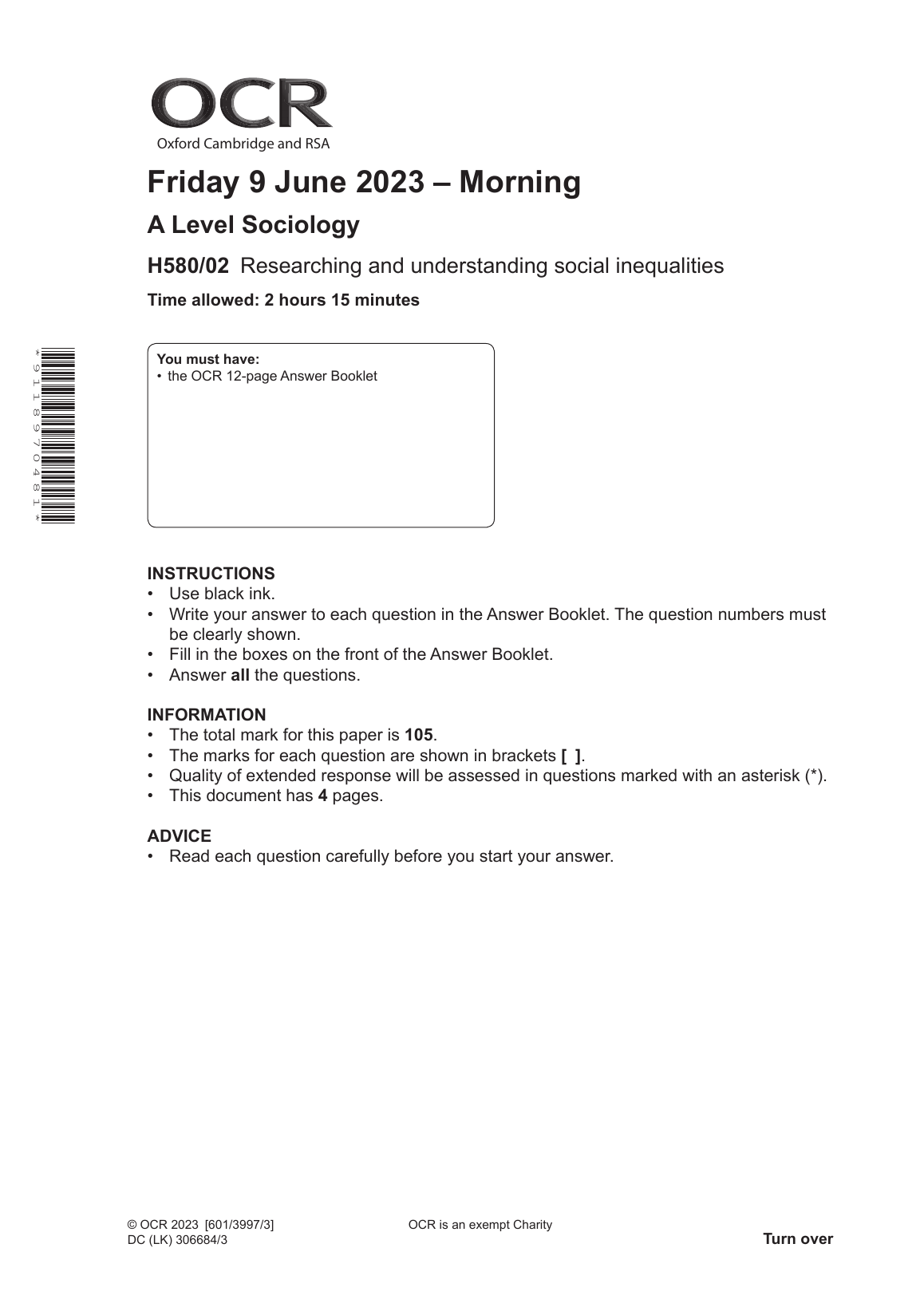 Cookies!
Cookies!

-
Categories
- ATI
- NR
- OCR GCSE Papers & ma...
- AQA papers mark sche...
- Relias Dysrhythmia
- OCR GCE A & AS LEVE...
- OCR GCSE Question Pa...
- Pearson Edexcel A an...
- EXAM
- Summary
- Study Notes
- QUESTION PAPER (QP)
- QUESTIONS & ANSWERS
- CASE STUDY
- Class Notes
- ESSAY
- Presentation
- Report
- Judgements
- Manual
- Summary
- STUDY GUIDE
- Thesis
- Visual
- Text Book Notes
- BUSINESS PLAN
- Syllabus
- LECTURE NOTES
- E-Book
- EXAM PROCTORED
- NCLEX-PN
- NCLEX-RN
- ORDER CUSTOM PAPER H...
- Dissertation
- Research Paper
- DISCUSSION POST
- Final Exam Review
- EXAM REVIEW
- SOAP NOTE
- iHuman
- SHADOW HEALTH
- TEST BANK
- MILESTONE
- HESI
- ATI MEDICAL SURGICAL
- QUESTIONS and ANSWER...
- SOPHIA PATHWAY
- MED-SURG EXAM
- HESI MED SURG
- UWorld
- Lab Experiment
- Lab Report
- Experiment
- NCLEX
- PATIENT ASSESSMENTS
- JOURNAL
- SOPHIA Milestone
- VSIM for NURSING FUN...
- PROJECT FINAL
- CAPSTONE SIMULATION
- VATI RN
- VATI PN
- Portfolio
- GIZMOS
- Solutions Guide
- SOLUTIONS MANUAL
- vSim For Nursing
- SWIFT RIVER
- MARK SCHEME
- Virtual Clinical Exp...
- AQA
- AQA Questions and Ma...
- Higher Education
- Edexcel
- INSTRUCTOR MANUALS
- ATI
- Advanced Trauma Life...
- GUIDELINES
- INTERVIEW
- Object-Oriented Prog...
- AS Mark Scheme
- A-Level Mark Scheme
- ANSWERS AND COMMENTA...
- GCSE MARK SCHEME
- GCSE QUESTION PAPER
- AQA Question Papers
- A/As Level Mark Sche...
- AS Level Mark Scheme
- RESOURCE BOOKLET
- Edexcel Question Pap...
- QUESTION PAPER & MAR...
- Test Prep
- LAB QUIZ
- Quiz
- PREDICTED PAPER
- IGCSE
- Examiners’ Report
- SPECIMEN INSERT
- INSERT CONTENT PAPER
- AQA A/As Level Quest...
- As Level Question Pa...
- Cambridge Internatio...
- Cambridge IGCSE QP
- Cambridge IGCSE MS
- BTEC Nationals
- Edexcel Mark Scheme
- A Level Question Pap...
- AS Level Question Pa...
- CHEAT SHEET
- Capism
- FISDAP
- AHIP
- Feedback Log
- Book Review
- FILM REVIEW
- POEM ANALYSIS
- SUMMARY
- PLAY ANALYSIS
- MOVIE ANALYSIS/REVIE...
- SAT
- LSAT
- MCAT
- TOEFL
- IELTS
- Textual Analysis
- Annotated Bibliograp...
- CODING SOLUTION
- Literature
- COURSE NOTES
- ASSIGNMENT
- PROJECT REPORT
- SOLUTIONS
- EXAM/TEST TEMPLATE
- TEMPLATE
- HOMEWORK
- WORKSHEET
- TEST PREP
- English Literature
- FINAL EXAM
- HESI A2
- APEA
- CAPSTONE
- SIMULATION
- PROGRAMMING
- HTML
- USMLE
- HARVARD CASE SOLUTIO...
- CASE SOLUTIONS
- Exam (elaborations)
- Answers
- Other
- Textbook notes
- Case
- TEST BANKS
- AMLS
- A Level & AS Level N...
- Exam Elaborations
- NRNP
- WGU C214
- Straighterline
- NBME
- NSG
- AQA 2023
- AQA GCSE QUESTION PA...
- Prophecy Pacu
- Prophecy Medical Sur...
- Prophecy RN
- TNCC
- WGU C215
- Texas All Line
- Rasmussen Pharmacolo...
- AQA Papers & Mark Sc...
- EMT BLOCK
- PAX
- EXCEL CRASH COURSE
- EMT FISDAP
- ATI Dosage Calculati...
- APEX
- TMC
- OCR GCSE
- Wonderlic
- VATI
- ANCC
- Smart Serve
- WGU C428
- AQA GCSE COMBINED SC...
- OCR PAPERS & MARK SC...
- NAPRx
- NUTRITION 101
- WGU C207
- USPS
- Support
- Cart {{ cart.length }}
- Account
 View example
View example
OCR GCE A LEVEL SOCIOLOGY PAPER 2 QUESTION PAPER 2023 (H580/02: Researching and understanding social inequalities). DOWNLOAD OFFICIAL AND VERIFIED OCR A LEVEL SOCIOLOGY PAPER 2 QUESTION PAPER 2023 ON www.leakedexams.com.
Source A
The UK gender pay gap, 2019
Occupation Average hourly
earnings for women
and men (£)
Gender
pay gap by
percentage points
Change
from
2018
Managers, directors and
senior officials 22.07 15.9% 2.0%
Professional occupations 21.11 10.1% –1.6%
Associate professional and
technical occupations 16.28 11.0% –0.9%
Skilled trades occupations 12.79 22.4% –1.8%
Administrative and secretarial
occupations 12.03 4.9% –1.6%
Process, plant and machine
operatives 11.22 18.1% –0.8%
Sales and customer service
occupations 10.07 4.4% –0.3%
Caring, leisure and other service
occupations 10.00 8.0% 0.1%
Elementary occupations* 9.53 11.0% –0.2%
Adapted from ONS (2019)
The table shows the UK gender pay gap for median (average) gross hourly earnings (excluding
overtime) for full-time employees by occupation group for the year ending April 2019.
The gender pay gap is the percentage difference between average earnings for men and those for
women. For example, a 10% gender pay gap would mean that men in an occupational area earn on
average 10% more per hour than women.
Where it is a negative figure, the figure for the change from 2018 shows by how many percentage
points the gender pay gap narrowed between 2018 and 2019. There are two occupational areas
where the change is a positive figure and this shows that the gender pay gap actually widened in
these occupations.
*Elementary occupations are roughly equivalent to what used to be called unskilled occupations.
| Author | OCR KING |
| Published | 15 Dec 2025 |
| Included files | |
OCR GCE A LEVEL BIOLOGY A PAPER 1 MARK SCHEME 2023...
OCR GCE A LEVEL BIOLOGY A PAPER 1 QUESTION PAPER 2...
OCR GCE A LEVEL BIOLOGY A PAPER 2 QUESTION PAPER 2...
OCR GCE A LEVEL BIOLOGY A PAPER 2 MARK SCHEME 2023...
OCR GCE A LEVEL BIOLOGY A PAPER 3 QUESTION PAPER 2...
OCR GCE A LEVEL BIOLOGY A PAPER 3 MARK SCHEME 2023...
OCR GCE A LEVEL CHEMISTRY A PAPER 1 QUESTION PAPER...
OCR GCE A LEVEL CHEMISTRY A PAPER 1 MARK SCHEME 20...
OCR GCE A LEVEL CHEMISTRY A PAPER 2 QUESTION PAPER...
OCR GCE A LEVEL CHEMISTRY A PAPER 2 MARK SCHEME 20...

 Cookies!
Cookies!










